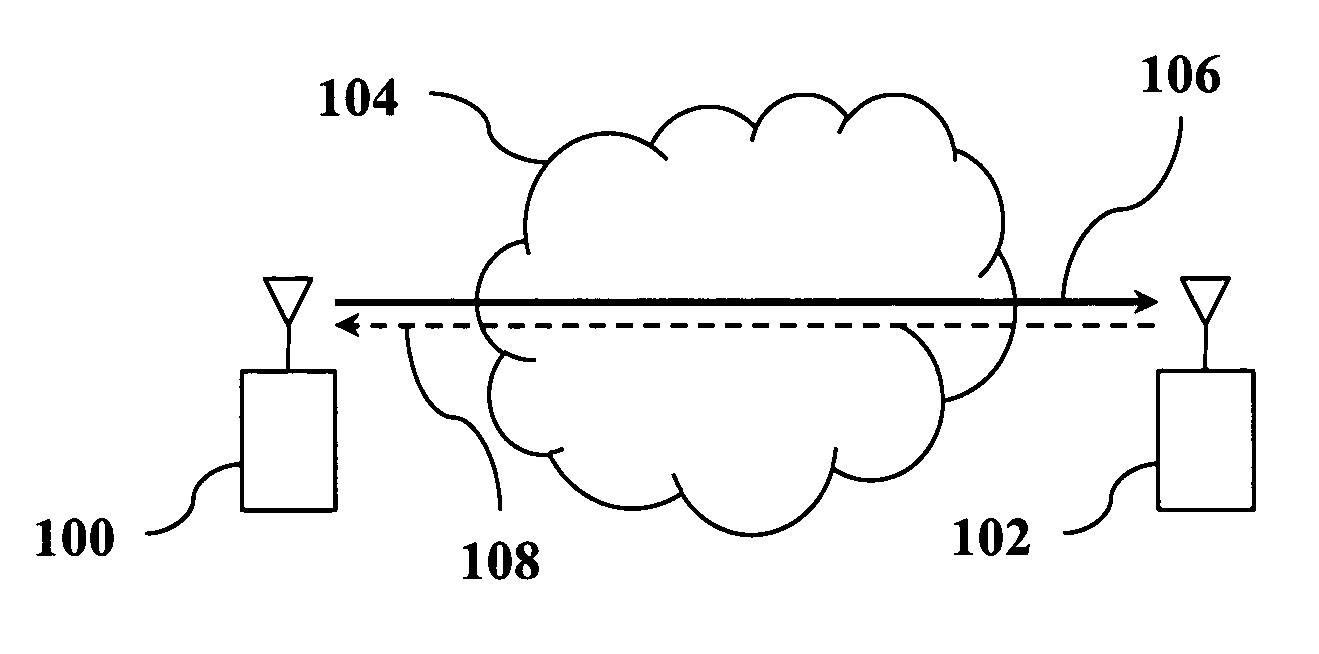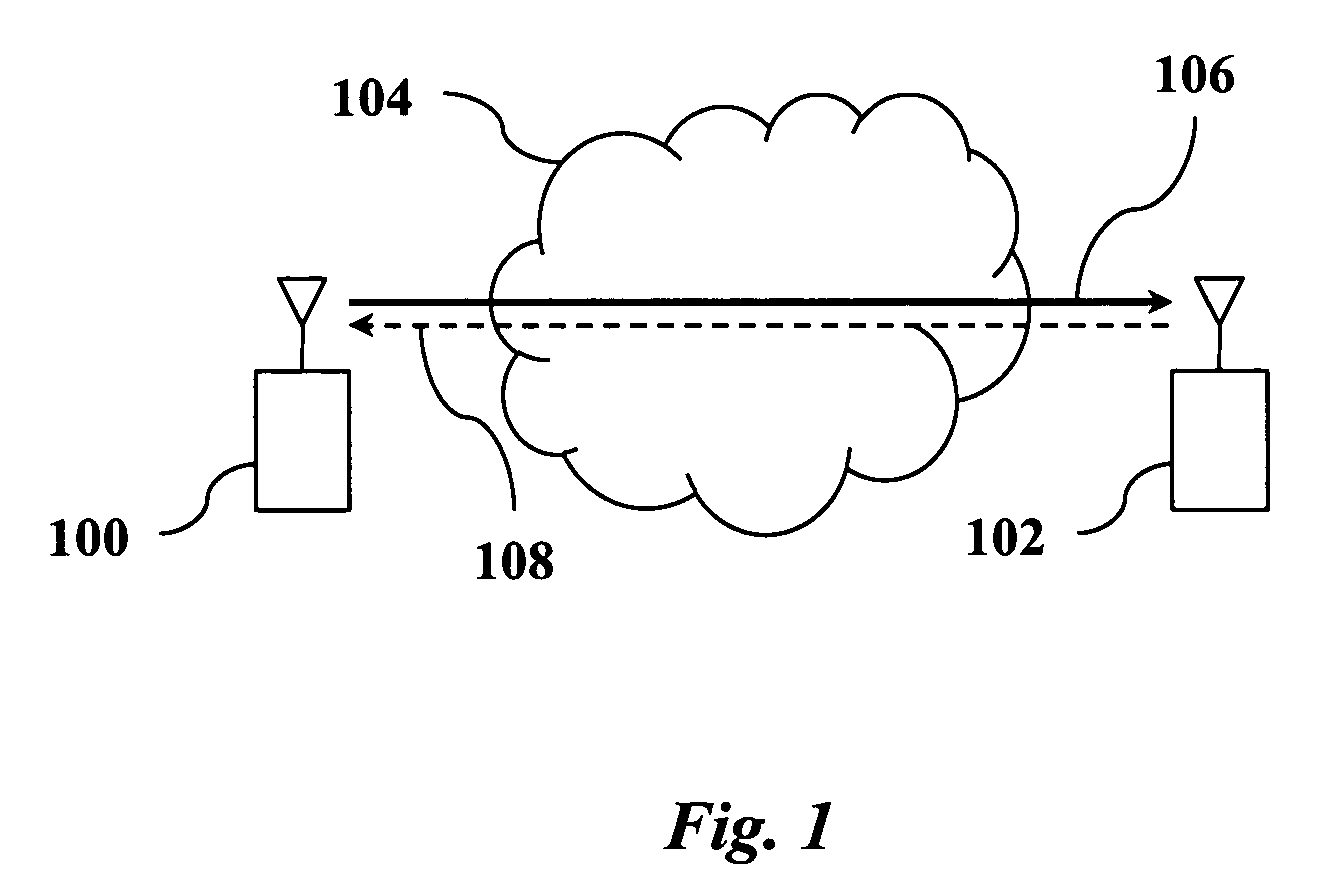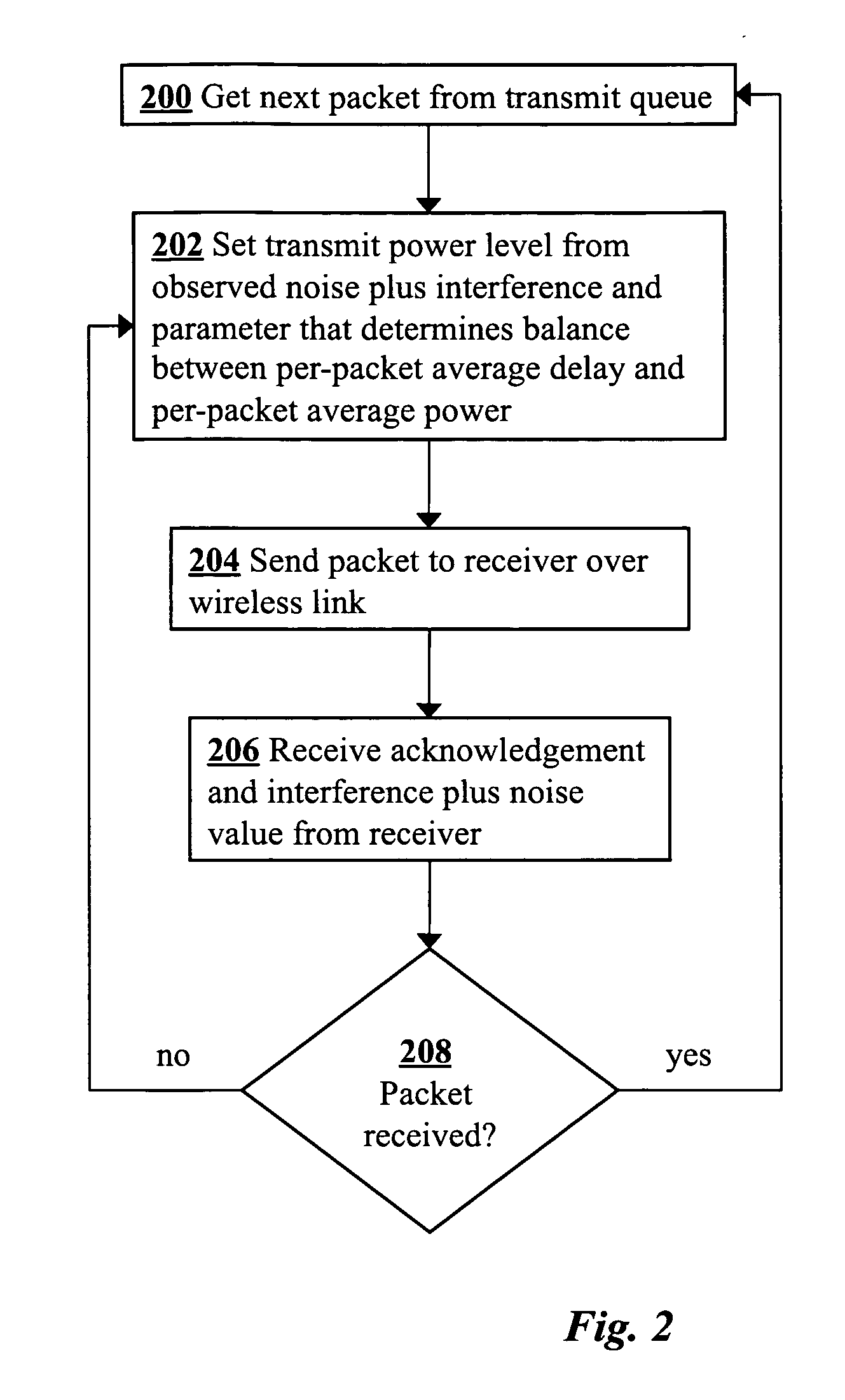Scalable delay-power control algorithm for bandwidth sharing in wireless networks
a delay-power control and wireless network technology, applied in the field of wireless communication systems and methods, can solve the problems of complex trade-offs between power control techniques, higher levels of interference between links, and high power consumption, and achieve the effect of efficient balance of communication delay and transmitter power
- Summary
- Abstract
- Description
- Claims
- Application Information
AI Technical Summary
Benefits of technology
Problems solved by technology
Method used
Image
Examples
Embodiment Construction
[0015]According to preferred embodiments of the invention, methods for power control in wireless networks are provided in which each wireless link selfishly manages its power vs. delay tradeoff in response to the interference generated by other links sharing the channel. FIG. 1 shows a wireless network which may be used to implement a power control method of the invention. The network includes a transmitter 100, a receiver 102, and a shared wireless medium 104. A data link 104 from the transmitter 100 to the receiver 102 is used to communicate data packets.
[0016]In general, the wireless network may include any number of transceivers with L communication links, indexed by i, sharing the same wireless medium and interfering with each other. It is assumed that each communication link 106 has a corresponding control link 108 for sending acknowledgements and signal to noise plus interference (SNR) values back from the receiver 102 to the transmitter 100. Communication over the wireless l...
PUM
 Login to View More
Login to View More Abstract
Description
Claims
Application Information
 Login to View More
Login to View More - R&D
- Intellectual Property
- Life Sciences
- Materials
- Tech Scout
- Unparalleled Data Quality
- Higher Quality Content
- 60% Fewer Hallucinations
Browse by: Latest US Patents, China's latest patents, Technical Efficacy Thesaurus, Application Domain, Technology Topic, Popular Technical Reports.
© 2025 PatSnap. All rights reserved.Legal|Privacy policy|Modern Slavery Act Transparency Statement|Sitemap|About US| Contact US: help@patsnap.com



